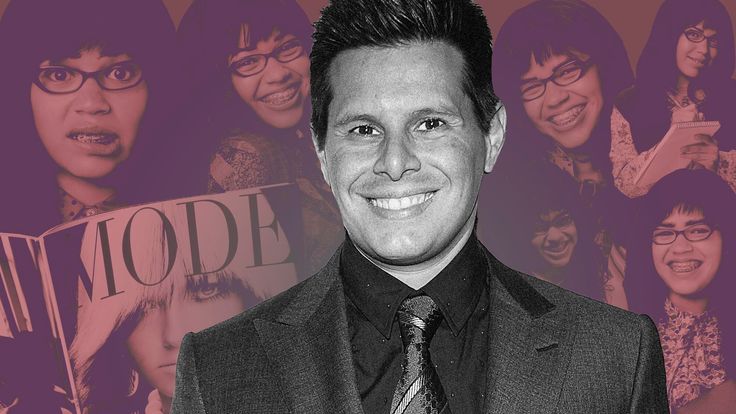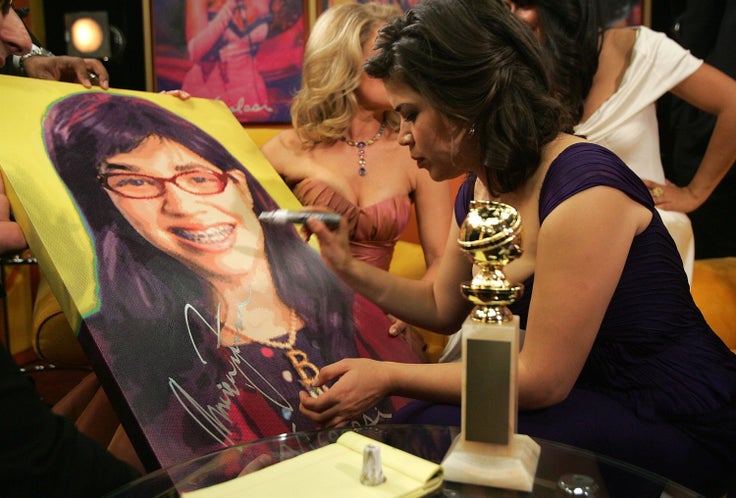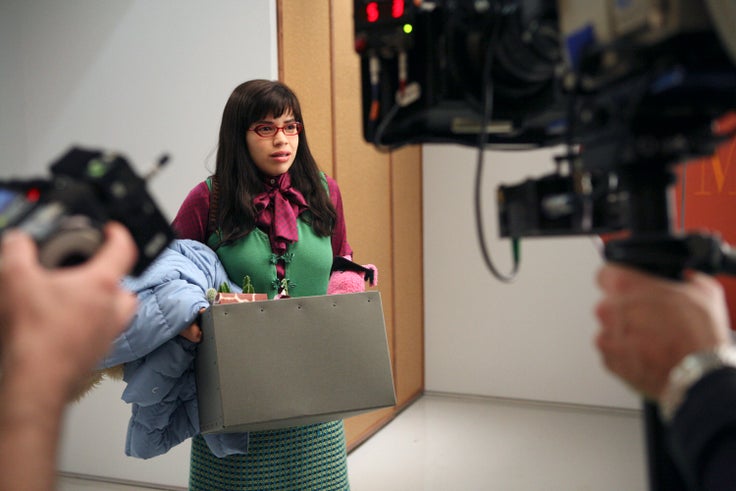Betty Suarez, the lead character in the ABC dramedy “Ugly Betty,” was the unlikeliest of heroines and everyone ― from those who taunted her on the job at an upscale fashion magazine to her close-knit family to the audience watching the show at home ― thought so.
“All the stuff you want to do, owning a magazine … it doesn’t happen for people like us, unless you’re J.Lo or something,” her nephew Justin (Mark Indelicato) told Betty (America Ferrera) on the stoop of their home in Jackson Heights, Queens, where they lived with her undocumented father, Ignacio (Tony Plana), and her spirited sister, Hilda (Ana Ortiz).
Justin was only in middle school and yet he already understood that success was limited to a select few from his family’s working-class background. For him and so many others, the American Dream was exemplified by the beautiful Jennifer Lopez, one of the few examples of U.S. Latino representation in Hollywood in the 2000s. But Silvio Horta, the creator and showrunner of “Ugly Betty” who died earlier this month, offered an alternative version of prosperity for new generations of Latinos through a character who was less aspirational and more relatable, a young woman who wasn’t conventionally attractive but was still the daring protagonist of her own life.

Betty had bushy eyebrows, braces, glasses and frizzy hair — pop culture’s hallmarks of the ugly duckling. She was also curvy, which was unfortunately groundbreaking for a show in 2006, as evinced by the second episode of the series. Drama arose over releasing an actress’s unretouched photos at Mode, the fashion magazine where Betty worked. Sure, there had been curvy girls on television before, but they somehow always seemed to be the butt of the joke, a caricatured sidekick to the more traditionally good-looking lead. Not Betty.
Let’s not sugarcoat it. Betty was harassed by her co-workers because of her looks, lack of fashion sense and Latinidad. It was no secret around the office that everyone knew she had only been hired because her supervisor’s father didn’t want his son, Daniel (Eric Mabius), sleeping with his assistants anymore. In an attempt to embarrass her and drive her to quit, Daniel has her fill in for a model at a photo shoot. Watching Betty stand alongside those models, attempting to strike sexy poses in a revealing outfit she is wholly uncomfortable in while everyone laughs at her, is one of the most heartbreaking scenes in the series. She is also routinely called fat and one of her co-workers, Amanda (Becki Newton), has a penchant for using an exaggerated Spanish accent around her and warning her not to get chimichurri sauce on important documents.
Yet somehow Betty remained strong. She never buckled under the pressure of her hostile work environment — though doing so would have been understandable. Instead, she focused on her dream of writing for magazines. Naturally, this led to her eventually gaining the respect, even the affection (in some cases), of her colleagues and rising through the ranks from the editor-in-chief’s personal assistant to the features editor at Mode.

Though Betty’s outfits became more muted and she learned how to blow-dry her hair as the seasons wore on, her professional success didn’t necessarily coincide with her becoming more conventionally attractive. This choice not only allowed “Ugly Betty” to maintain the integrity of the character but gave the show’s subversion of beauty norms more impact. So often in ugly duckling stories, as in “The Princess Diaries,” the lead woman gains agency after a makeover. After the glasses are stripped off, the bronzer is splattered on and the eyebrows are tweezed, a woman who is able to assert and believe in herself emerges. Yet in leaving Betty’s bangs a little too long, continuously clothing her in mismatched patterns and keeping her braces on until the last season, “Ugly Betty” demonstrated that a woman has more to offer than her looks. And that is a radical revelation that came before the current body positivity movement.
“I think bringing a unique diverse face to television was something different and it shouldn’t have been,” Horta said in a 2013 interview with the Television Academy Foundation. “Betty was shunned for her looks, but through her own moxie and passion is able to change people’s minds about her.”
He recalled that when he was in discussions about “Ugly Betty” with the producers of the show, he pitched the idea that Betty should be an FBI agent because he was concerned the show as it stood wouldn’t have enough action to pull in audiences every week. Luckily, the producers told him to focus on the story he wanted to tell.

“Ugly Betty” wound up incorporating many elements of Horta’s own life as a gay Cuban American who grew up in an immigrant family in Miami and these authentic details are a key reason why the show has resonated with so many people. Horta captured working-class life in Queens and the eclectic groups of people who resided there, juxtaposing them with the people Betty worked with, who were of a less diverse ilk. He wrote two fully fleshed-out gay characters, Marc (Michael Urie) and Justin, who were not simply defined by their sexuality. And he showed women ― particularly Latina women, who are often pressured to be sexy and to embrace their curves only if they’re in “the right places” ― that their worth was not tied to their looks, that they could find much greater meaning through friends, family, love and work.
“It’s all nice, but what’s the problem with having some Latinas somewhere in there?” Betty’s father asks upon seeing proofs of the next month’s magazine.
It’s easy to forget that it wasn’t too long ago that Latinas didn’t grace the covers or insides of magazines or appear as leads in television series. While progress has been made in recent years, there remains a dearth of Latino representation in entertainment, which further amplifies the legacy of “Ugly Betty.”
Horta’s show set a precedent, proving series that reflect the U.S. Latino experience could be commercially successful, even as buzzwords like “diversity” and “inclusion” sound increasingly hollow. And it showed that life did not have to wait until the braces came off, but could start after you internalized Betty’s self-affirmation that “you are an attractive, intelligent, confident businesswoman.”
